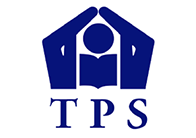Religious Education

National Curriculum Religious Education at KS1 & 2
TPS Context Values in our Religious Education Curriculum
TPS Religious Education Curriculum
Why is Religious Education important?
The Religious Education curriulum at Tottington Primary School provides children with the opportunities to explore what people believe and how this impacts their way of life. Children are taught to make connections between religions and non-religious beliefs. RE equips children with the knowledge, understanding and skills needed to handle questions raised by religion and belief in order for them to reflect on their own ideas of living. This will significantly contribute to children’s personal development and well-being. Children tackle difficult questions by learning insights that can work to challenge stereotypes, promote cohesion, and understand extremism. RE is also a very valuable subject, as it encourages children to value themselves and the communities within which they live.
What are the aims of our Religious Education curriculum?
At Tottington Primary School we are passionate about promoting high standards of Religious Education. Through combining the Early Years and National Curriculum with our TPS core values, our ambitious RE curriculum equips all our children with the necessary skills that will allow them to become confident in expressing their views and opinions, but most importantly they will learn to discuss their views in a respectful manner.
The Bury Agreed Syllabus that is used to deliver RE is based around a key question, where the questions open-up the content to be studied. When learning about religions we use three main elements that help set the context for exploring a religion and belief. It allows children to have a structure that helps aid children’s encounters of diverse religious traditions, alongside non-religious world-views, which reflect the backgrounds of many children in our school. The three principal aims that we use are: making sense of beliefs, understanding the impact and making connections.
The first element is making sense of beliefs. Children are identifying and making sense of core religious and non-religious beliefs and concepts; understanding what these beliefs mean within their traditions; recognising how and why sources of authority (such as texts) are used, expressed and interpreted in different ways, and developing skills of interpretation.
The second element children look at is understanding the impact. Here children examine how and why people put their beliefs into action in diverse ways, within their everyday lives, within their communities and in the wider world.
Lastly children will be making connections. This involves evaluating, reflecting on and connecting the beliefs and practices studied; allowing children to challenge ideas studied, and the ideas studied to challenge children’s thinking; discerning possible connections between these and children’s own lives and ways of understanding the world. Teaching and learning will allow the overlap of the above three elements as appropriate to the religion, concept and question being explored.
Through our well-planned, and sequenced RE curriculum our children acquire the vital knowledge and skills required for the next stage of their learning journey and on into adulthood. This enables the children of Tottington Primary School to become successful, active and positive members of their local community and wider world.




